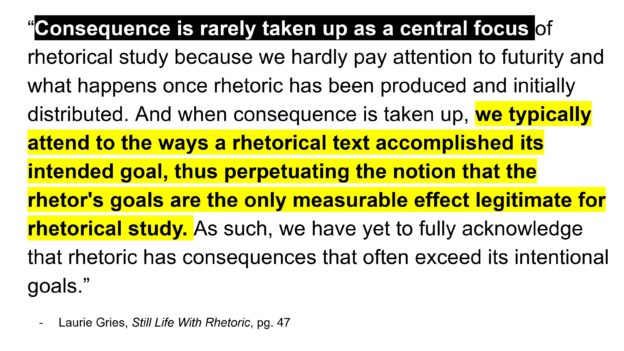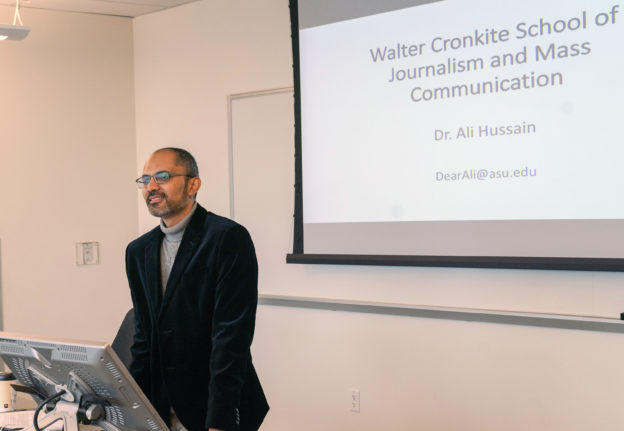Category: Digital Literacies
-
The Single Most Essential Requirement in Designing a Fall Online Course

Let’s start the week [updated 7/20/2020] by repeating that a summer of planning for better online learning this Fall will be wasted if we do not begin from the premise that our students are learning from a place of dislocation, anxiety, uncertainty, awareness of social injustice, anger, and trauma. So are we. This is the […]
-
Language Panda: Finding and Sharing Digital Tools for Language Teaching

In 2016, a group of graduate students at Vanderbilt University identified a need on campus for a stronger language teaching community: While instructors were using technology in their classes to enhance language learning, they had few opportunities to share their digital pedagogy or learn how other teachers implemented such technology in their classes. To address this need, […]
-
“Learning Outcomes” in a Time of COVID: What Happens When Students Say What They Aspire To?

What happens if we give up the idea that our course should begin with a prescriptive list of “learning outcomes” and offer students the chance to express their own? Even if you are at an institution that requires you to submit your outcomes in advance (as many do), you can simply put those on the […]
-
From Cardi B to Stranger Things: Reading Sounds, Captioning Meaning

This is the third post in a series leading up to my HASTAC webinar “From Cardi B to Stranger Things: Using Popular Culture in the Writing Classroom.” Disability Studies and Disability Rhetoric ask us to rethink how we arrange our classrooms (physical and virtual) and the course content we provide. Rather than a reactive measure, […]
-
From Cardi B to Stranger Things: Circulating Consequences

This is the second post in a series leading up to my HASTAC webinar “From Cardi B to Stranger Things: Using Popular Culture in the Writing Classroom.” Circulation Studies is something I am relatively new to, but considering the speed at which popular culture is shared and re-shared, it makes sense to incorporate discussion of […]
-
Tips for Students: Distance Learning in the time of COVID-19

Students and people who work with students know that it is difficult to balance school and work, even in normal circumstances. And now, in the context of the COVID-19 pandemic, that challenge is more acute than ever. Together with my CUNY colleagues Lisa Brundage and Lisa Rhody, we have prepared some recommendations for students who […]
-
From Cardi B to Stranger Things: Finding the Sonic Narrative

Image by Free-Photos from Pixabay This post is the first in a series that relates to my HASTAC webinar “From Cardi B to Stranger Things: Using Popular Culture in the Writing Classroom.” In this post I explore intertextuality–how texts rely on other texts to make meaning–as an important way to help students work through the […]
-
Engagement Tools for Remote Teaching

In the past week, more and more universities have switched or considering switching in-person courses to online courses. Our academic community joined their efforts to offer primers and guidelines from how to conduct classes through online platforms, to discussions on accessibility and engagement. Teaching online for the first time can be challenging; however, we […]
-
Creating Digital Discovery Journals with Ms. Amber Benson

As the Executive-in-Residence at the Temerlin Advertising Institute at Southern Methodist University, Ms. Amber Benson teaches Digital Media Landscapes*, Digital Strategy III, Campaigns, Business Communication, New Business Development, Healthcare Advertising, and a Graduate course on Metrics of Success. In Ms. Benson’s course Digital Media Landscapes, students create a Digital Discovery Journal. In her words, Ms […]
-
Experimenting with WhatsApp in the Classroom with Professor Syed Ali Hussain

Professor Syed Ali Hussain is an assistant professor of digital audience engagement at Arizona State University where he teaches “Social Media Campaigns and Engagement” and “Digital Audience Research.” About his work, Professor Hussain writes: “My teaching and research is about social influence and persuasion. I particularly like to study the role of nostalgic emotions […]